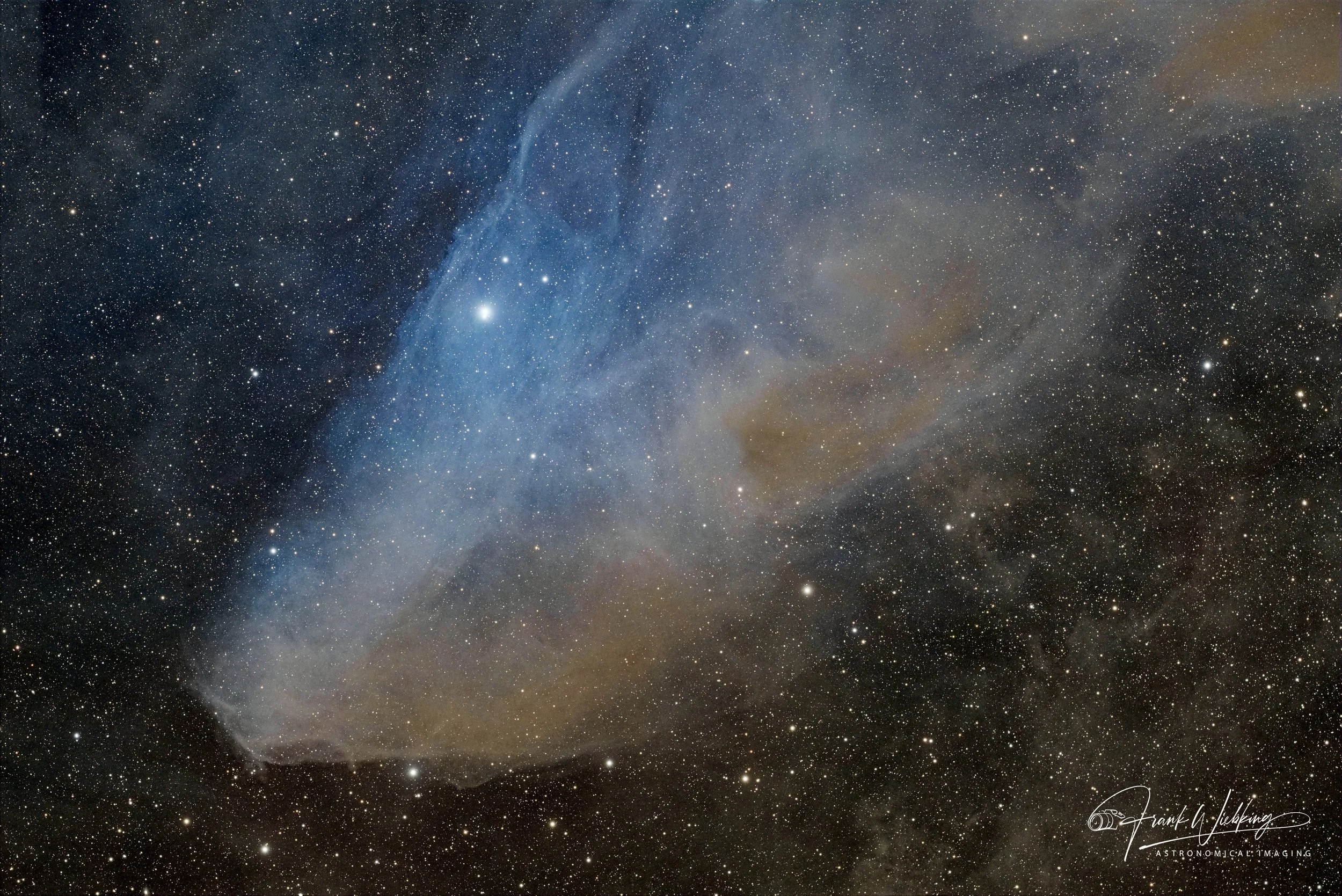
AAPOD2 Image Archives
Galaxies from Near to Far: NGC 3718, NGC 3729 to Hickson 56 and Beyond
This deep-space composition reveals a stunning cosmic lineup beginning with the warped spiral galaxy NGC 3718 and its companion NGC 3729, just 52 million light-years away in the constellation Ursa Major. Their distorted shapes hint at gravitational interactions, setting the stage for a layered journey into the depths of space. Just beyond lies Hickson Compact Group 56, a tight cluster of interacting galaxies over 400 million light-years away, their faint forms whispering of ancient mergers and galactic drama.
Captured from Wunstorf, Germany, this image spans an extraordinary range of distances and cosmic time. From relatively nearby neighbors to remote galaxy groups, it provides a rare visual bridge across the universe, reminding us how interconnected—and immense—our cosmic neighborhood truly is.
NGC 2392 - Eskimo Nebula
NGC 2392, also known as the Eskimo Nebula, is a bright planetary nebula located about 6,500 light-years away in the constellation Gemini. This nebula is the remnant of a dying Sun-like star, shedding its outer layers while its core contracts into a white dwarf. The intricate structure of NGC 2392 consists of an inner shell of ionized gas, resembling a face surrounded by a fur-lined hood, and an outer halo of expelled material shaped by stellar winds. The central star’s intense radiation illuminates the nebula, creating its vibrant blue and orange hues, with oxygen and hydrogen emissions dominating the spectral composition.
This image was acquired using the lucky imaging technique, which involves capturing a high number of short-exposure frames to mitigate atmospheric distortion. By selecting and stacking only the sharpest frames, this method significantly enhances the resolution, revealing fine details within the nebula’s complex structure. The result is a highly detailed view of NGC 2392, showcasing its intricate filaments, radial outflows, and the turbulent environment surrounding the central star. Lucky imaging is particularly effective for planetary nebulae, where high spatial resolution is crucial in capturing their delicate, evolving features.
IC1848 Soul Nebula
Radiating with celestial energy, the Soul Nebula (IC 1848) shines brilliantly in the constellation Cassiopeia. This sprawling emission nebula, captured in the iconic SHO (Hubble) palette—where sulfur, hydrogen, and oxygen are mapped to striking gold, green, and blue hues—highlights the intricate details of this stellar nursery.
Made famous by the Hubble imaging team, the nebula’s vivid colors and textures resemble a beating heart, earning it the soulful moniker. Within its glowing depths, massive clouds of ionized gas fuel the birth of new stars, while darker regions of dust weave delicate shadows across the cosmic canvas.
The Soul Nebula is more than a celestial landmark; it’s a testament to the creative forces of the universe, showcasing the beauty and life hidden within the vastness of space.
NGC 5139 - Omega Centauri
NGC 5139, commonly known as Omega Centauri, is the largest and brightest globular cluster in the Milky Way. Located in the constellation Centaurus, Omega Centauri is about 15,800 light-years away from Earth and contains several million stars, making it one of the most massive and dense globular clusters known. This cluster spans over 150 light-years in diameter, and its stars range in age from 10 to 12 billion years, offering a glimpse into the early history of our galaxy.
Omega Centauri stands out not only for its sheer size but also for its complex stellar population. Unlike most globular clusters, which typically host stars of a similar age and composition, Omega Centauri contains multiple generations of stars. This suggests that it may have once been the core of a dwarf galaxy that was absorbed by the Milky Way. The cluster's dense core, where stars are packed closely together, contrasts with its more sparsely populated outer regions, creating a stunning visual display in astro images.
IC 4592 Blue Horsehead Nebula
IC 4592, commonly known as the Blue Horsehead Nebula, is a reflection nebula located in the constellation Scorpius. The nebula's blue coloration is primarily due to the light from the nearby star Nu Scorpii reflecting off the dust particles within the nebula. This celestial feature is part of a larger complex of dark and reflection nebulae, making it a fascinating target for astrophotographers and astronomers alike.
The Blue Horsehead Nebula is situated approximately 400 light-years from Earth. Its intricate structures and the striking contrast between the blue reflection nebula and the surrounding dark nebulae create a visually stunning image. Observing and photographing IC 4592 requires dark skies and good equipment, but the result is a breathtaking view of this beautiful cosmic region.
NGC 6723, 6726, 6727, 6729 and friends
In the rich star fields near the border of the constellations Sagittarius and Corona Australis lies a fascinating collection of celestial objects. NGC 6723 is a bright globular cluster situated about 28,000 light-years from Earth. It is characterized by its dense core and myriad of ancient stars, some of the oldest in our galaxy, shining with a combined brightness that makes it visible even with small telescopes.
Adjacent to this ancient cluster is the intriguing reflection nebula complex of NGC 6726, NGC 6727, and NGC 6729. These nebulae are illuminated by the light from young, hot stars embedded within them, creating a striking contrast against the dark interstellar dust. NGC 6729, in particular, is associated with the variable star R Coronae Australis and displays dynamic changes in brightness and structure. This region is a stellar nursery, where new stars are being born, and their intense radiation shapes and sculpts the surrounding gas and dust into beautiful and complex structures. Together, these objects present a stunning tableau of stellar evolution, from the birth of new stars to the ancient glow of globular clusters.







